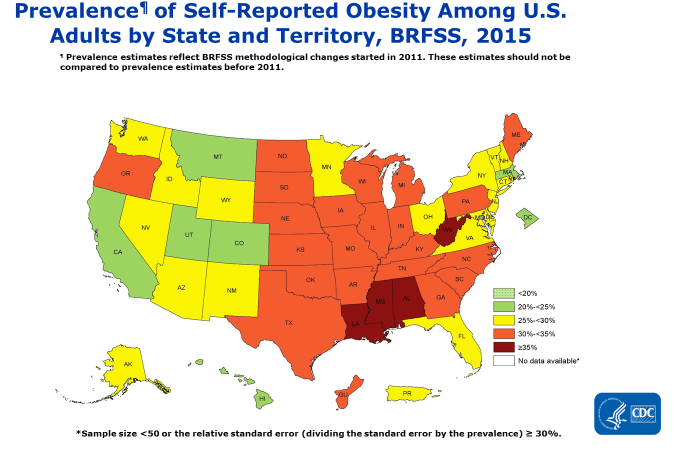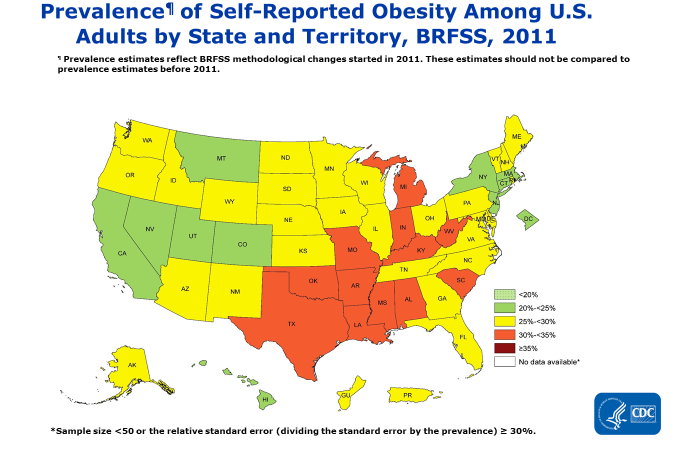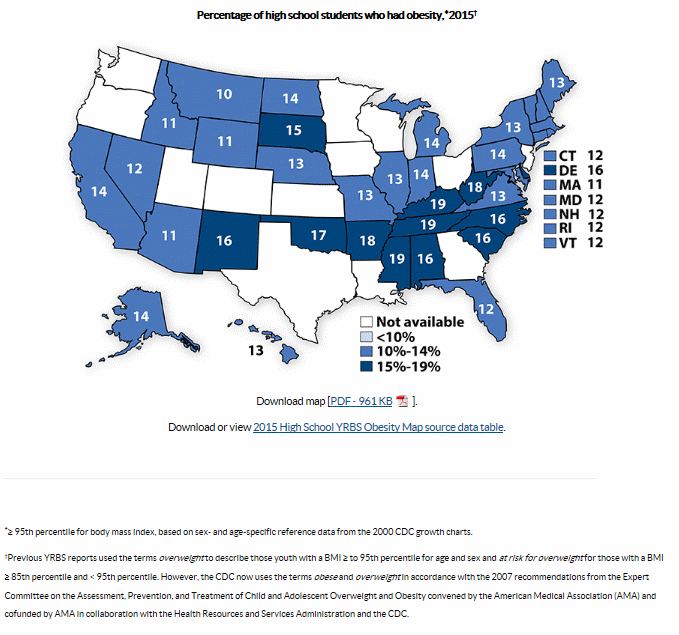Messages to be Tested with Mothers
3- APPENDIX A- Messages to be Tested - DNPAO Message Testing (10.17.17) CLEAN.docx
CDC and ATSDR Health Message Testing System
Messages to be Tested with Mothers
OMB: 0920-0572
APPENDIX A:
MESSAGES TO BE TESTED
Messages combining nutrition and physical activity and relationship to obesity
Message # |
Topic |
Messages |
|
|
Individual responsibility that combines both nutrition and physical activity and relationship to obesity |
The key to achieving and maintaining a healthy weight isn’t about short-term dietary changes. It’s about a lifestyle that includes healthy eating, regular physical activity, and balancing the number of calories you consume with the number of calories your body uses.
Staying in control of your weight contributes to good health now and as you age. By avoiding weight gain, you avoid higher risks of many chronic diseases, such as heart disease, stroke, type 2 diabetes, high blood pressure, osteoarthritis, and some forms of cancer. |
|
|
Environmental/collective responsibility message that combines both nutrition and physical activity |
It can be difficult for children and parents to make healthy food choices and get enough physical activity when they are exposed to environments that do not support healthy habits. Places such as child care centers, schools, or communities can affect diet and activity through the foods and drinks they offer and the opportunities for physical activity they provide. Other community factors that affect diet and physical activity include the affordability of healthy food options, peer and social supports, marketing and promotion, and policies that determine how a community is designed. |
|
|
Nutrition message |
Although the news seems to tell us otherwise, there’s no great secret to healthy eating. To help your children and family develop healthy eating habits:
|
|
|
Physical activity message |
As a parent, you can help shape your child's attitudes and behaviors toward physical activity. Throughout their lives, encourage young people to be physically active for one hour or more each day, with activities ranging from informal, active play to organized sports. Here are some ways you can do this:
|
Messages related to beliefs/attitudes about why mothers should care about obesity prevention/making healthy living easier
Message # |
Beliefs/Attitudes
|
Messages |
|
|
|
I would like my children to have a better life than me.
|
Childhood obesity is related to psychological problems such as anxiety and depression; low self-esteem and lower self-reported quality of life; and social problems such as bullying and stigma. Consuming a healthy diet and being physically active can help children grow as well as maintain a healthy weight throughout childhood. Kids need nutrition from foods and drinks to fuel their bodies. The kinds and amounts of food they give their bodies can directly affect how they look and feel. Also, active kids are better learners. Students who are physically active tend to have better grades, school attendance, cognitive performance (e.g., memory) and classroom behaviors (e.g., on-task behavior). Staying active and eating well can help set your children up for success now and in the future. |
|
|
|
I want my children to grow into healthy adults.
|
Eating healthy and being physically active can help kids grow into healthy adults. A poor diet and physical inactivity can lead to energy imbalance (e.g., eating more calories than your body uses) and can increase the risk of a child becoming overweight or obese. Children who have obesity are more likely to become adults with obesity. Adult obesity is associated with an increased risk of a number of serious health conditions including heart disease, type 2 diabetes, and cancer. |
|
|
|
I want my family to avoid getting chronic diseases like diabetes, heart disease, and cancer.
|
Good nutrition and regular physical activity are essential to keeping current and future generations of Americans healthy. People who eat a healthy diet and get enough physical activity live longer and have fewer chronic diseases, such as type 2 diabetes, heart disease, obesity, and some forms of cancer. |
|
|
|
I want my neighborhood to be a place where my family has access to healthy foods.
|
It can be difficult for children and parents to make healthy food choices and get enough physical activity when they are exposed to environments that do not support healthy habits. Places such as child care centers, schools, or communities can affect diet and activity through the foods and drinks they offer and the opportunities for physical activity they provide. Other community factors that affect diet and physical activity include the affordability of healthy food options, peer and social supports, marketing and promotion, and policies that determine how a community is designed. |
|
|
|
I want my neighborhood to be a place where my family has access to places to be active.
|
It can be difficult for children and parents to make healthy food choices and get enough physical activity when they are exposed to environments that do not support healthy habits. Places such as child care centers, schools, or communities can affect diet and activity through the foods and drinks they offer and the opportunities for physical activity they provide. Other community factors that affect diet and physical activity include the affordability of healthy food options, peer and social supports, marketing and promotion, and policies that determine how a community is designed. |
|
|
|
I want my neighborhood to be a healthy place for my family and me to live.
|
It can be difficult for children and parents to make healthy food choices and get enough physical activity when they are exposed to environments that do not support healthy habits. Healthy neighborhoods are those designed and built to improve the quality of life for all people who live, work, worship, learn, and play within their borders – where every person is free to make choices amid a variety of healthy, available, accessible, and affordable options. |
|
|
|
I want to save money for things that are important to my family.
|
Eating unhealthy and not getting enough physical activity costs money! Excess calorie intake and physical inactivity contribute to obesity. The medical costs for adults with obesity have been found to be $1,429 higher than those of normal weight. |
|
|
|
I want to feel good and be able to do the things my family enjoys. |
Staying in control of your weight contributes to good health now and as you age. In addition to improving your health, being fit and maintaining a healthy weight is likely to improve your life in other ways. For example, your general mood and self-confidence. |
|
|
|
I want everyone in my family to have a long and healthy life. |
People who eat a healthy diet and get enough physical activity live longer. By avoiding weight gain, you avoid higher risks of many chronic diseases, such as heart disease, stroke, type 2 diabetes, high blood pressure, osteoarthritis, and some forms of cancer. |
|
|
|
I want to teach my children how to take care of themselves so they can live healthy lives.
|
As a parent, you can help shape your child’s attitudes and behaviors toward physical activity and what they eat so they can make healthier choices for themselves as they get older. For example, you can make physical activity part of your family’s daily routine by taking family walks or playing active games together. And, you can help children learn to be aware of what they eat by developing healthy eating habits, looking for ways to make favorite dishes healthier, and reducing calorie-rich temptations. Making fruit and vegetables available and easy to eat and limiting sugary drinks to special occasions can also help children develop healthy behaviors. |
|
|
|
I want to be a good example for my children so they know how to lead a healthy life.
|
Children and adolescents should do 60 minutes (1 hour) or more of physical activity each day. Remember that children imitate adults. Start adding physical activity to your own daily routine and encourage your child to join you. |
|
|
|
I want my children to be happy and healthy. |
Obesity during childhood can have a harmful effect on the body in a variety of ways. Childhood obesity is related to:
And, children who have obesity are more likely to have:
|
|
|
|
I want my children to be physically and financially independent. |
Children who have obesity are more likely to become adults with obesity. Adult obesity is associated with increased risk of a number of serious health conditions including heart disease, type 2 diabetes, and cancer. If children have obesity, their obesity and disease risk factors in adulthood are likely to be more severe. The medical costs for adults with obesity were $1,429 higher than those of normal weight. Also, obese adults are more likely to be discriminated against during the hiring process and perceived as having less leadership potential which could lead to greater risk of unemployment. |
|
Messages related to breastfeeding
Message # |
Messages |
Breastfeeding protects babies- messages |
|
|
|
Breastfeeding protects babies. Breastfeeding is recognized as the best source of nutrition for most infants. The cells, hormones, and antibodies in breastmilk help protect babies from illness. A few of the things that breastfed babies have includes a lower risk for are asthma, leukemia, obesity, ear infections, and type 2 diabetes. |
|
|
Breastfeeding protects babies. Breastfeeding is recognized as the best source of nutrition for most infants. Breastfeeding helps develop the parts of the brain responsible for language, emotions, thinking and learning. |
|
|
Breastfeeding protects babies. Breastfeeding is recognized as the best source of nutrition for most infants. Exclusive breastfeeding for six months helps prevent infant deaths. |
|
|
Breastfeeding protects babies. Breastfeeding is recognized as the best source of nutrition for most infants. Medical costs may be lower for fully breastfed infants because breastfed infants usually need fewer sick care visits, prescriptions, and hospitalizations. |
|
|
Breastfeeding protects babies. Breastfeeding is recognized as the best source of nutrition for most infants. The longer the baby is breastfed, the greater the benefit. |
Breastfeeding benefits mothers- messages |
|
|
|
Breastfeeding benefits mothers. Breastfeeding helps a mother's health and healing following childbirth. |
|
|
Breastfeeding benefits mothers. Breastfeeding reduces the mother’s risk of breast and ovarian cancer, type 2 diabetes, heart disease and stroke later in life. |
Additional Messages to Be Tested (Focus Groups Only)
Message # |
Messages |
|
|
2015 Adult Obesity Map (Obesity Map #1)
|
|
|
2011 Adult Obesity Map (Obesity Map #2)
|
|
|
2015 Youth Obesity Map (Obesity Map #3)
|
|
|
Beliefs/Attitudes Statements
|
|
|
Division of Nutrition, Physical Activity, and Obesity (DNPAO) Description CDC’s Division of Nutrition, Physical Activity and Obesity is at the forefront of decreasing obesity in the U. S., including contributing to the decline in obesity among children ages 2-5. However, obesity still affects almost 1 in 5 children and 1 in 3 adults, putting people at risk for high blood pressure, high cholesterol, type 2 diabetes, heart disease and certain cancers. Obesity costs the US health care system $147 billion a year and over a quarter of all Americans 17 to 24 years are too heavy to join the military. DNPAO protects the health of Americans at every stage of life by encouraging regular physical activity and good nutrition. We support the toddler eating healthy snacks and playing actively in child care, the student being able to walk to school, the mother who chooses to breastfeed, and the older adult who can walk safely and have access to healthy foods in their own neighborhood.
|
| File Type | application/vnd.openxmlformats-officedocument.wordprocessingml.document |
| Author | Laura Planas |
| File Modified | 0000-00-00 |
| File Created | 2021-01-21 |
© 2025 OMB.report | Privacy Policy


